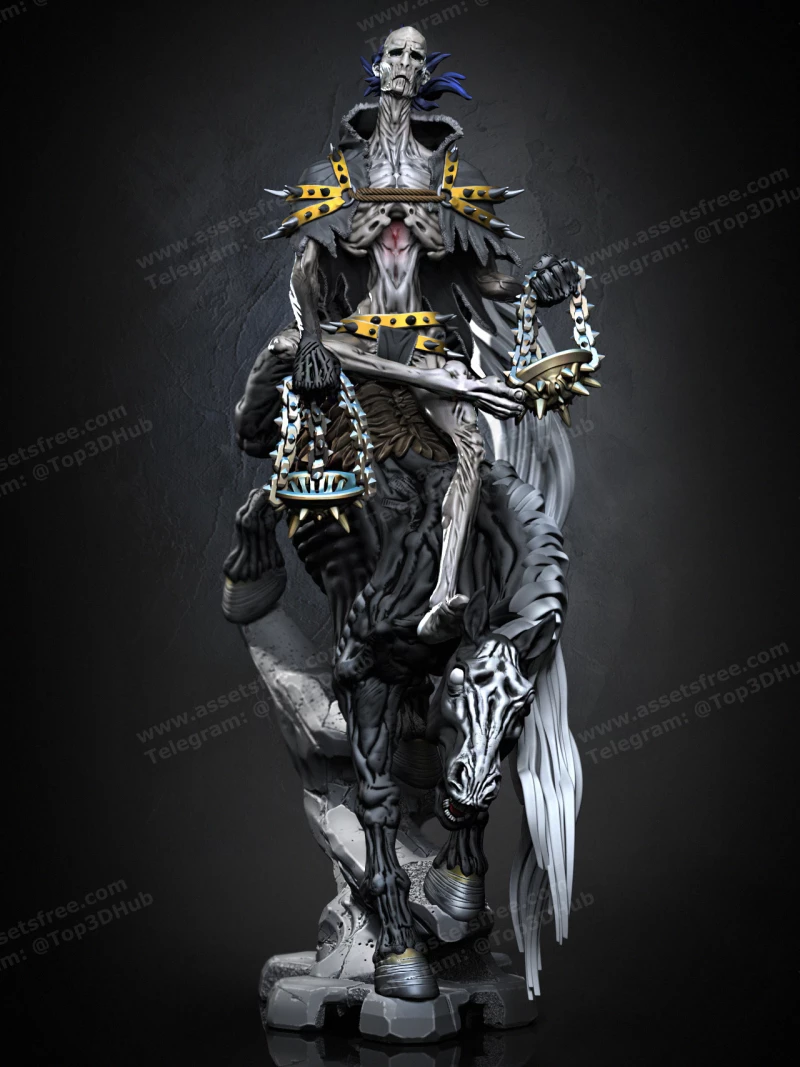Famine Rider — Four Horsemen
Famine Rider — Four Horsemen — 3D print model STL
3D Print File Format: STL
The Famine Rider, also known as the Pale Rider, is one of the Four Horsemen of the Apocalypse in Christian eschatology. The Four Horsemen are described in the Book of Revelation in the New Testament of the Bible, specifically in Revelation 6:1-8. Each Horseman represents a different aspect of the end times and is associated with a particular color and role. The Four Horsemen are typically seen as harbingers of divine judgment and the coming apocalypse.
The Four Horsemen and their descriptions are as follows:
1. The First Horseman — Conquest (sometimes Pestilence): Riding a white horse, this Horseman is often associated with conquest, taking over lands, or bringing forth pestilence. The rider has a bow and a crown and goes out to conquer.
2. The Second Horseman — War: Riding a red horse, this Horseman represents war and conflict. The rider is given a great sword, symbolizing the violence and warfare that will accompany the end times.
3. The Third Horseman — Famine: Riding a black horse, this Horseman represents famine and scarcity. The rider carries a pair of scales, which is a symbol of measuring and rationing food, as people struggle to find enough to eat.
4. The Fourth Horseman — Death: Riding a pale horse, this Horseman represents death itself. The rider’s name is Death, and Hades follows him. They are given power over a fourth of the earth to kill through various means, including sword, famine, pestilence, and wild beasts.
The Four Horsemen are often interpreted as symbolic figures, and their arrival heralds the various catastrophes and events that will occur during the end times or the apocalypse, leading to the ultimate judgment and transformation of the world. Different religious traditions and interpretations may provide nuanced variations of these descriptions, but they are a well-known and iconic element of Christian eschatology and have been referenced and depicted in various forms of art, literature, and popular culture.

